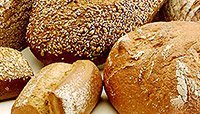
12 Proven Foods And Supps Essential For Every Type 2 Diabetes Diet
When you have type 2 diabetes, picking the right foods is essential. But with all the information out there, knowing what foods are best can be confusing. Check out this list of 12 proven food choices that will help get you on the right track!
Cut out bread.
No sugar in your coffee.
Only one potato at dinner.
If you've got blood sugar problems then you've heard those instructions over and over. The focus is always on what you should remove from your diet, and it's incredibly frustrating. What about what you can eat?
What about the foods you should be adding to a diet for type 2 diabetes ... the foods that can actually improve blood sugar control? Research shows there are many natural foods and nutrients that can help, either by reducing sugar absorption into the bloodstream or improving insulin resistance.
It's certainly worth your while to learn what those foods are, rather than just what to avoid. I've done some of the research here and strongly recommend you start with the following.
1
ALMONDS
Benefit: Improves glucose metabolism
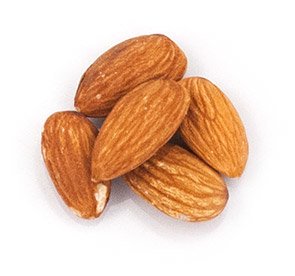
Tree nuts—not peanuts, which grow in the ground—are linked with many metabolic health benefits. But almonds really standout when it comes to managing blood sugar. They are very low in carbohydrates, but that's not why. The reason is magnesium.
Magnesium is an essential mineral involved in over 300 bodily processes, including blood pressure regulation and blood sugar control1, 2. Alongside spinach, almonds and cashews are among the best sources of magnesium in the human diet. Several handfuls provides over 20% of the daily recommended intake2.
Top 3 Food Sources of Magnesium3 |
||
| Food | Milligrams Per Serving | Percent RDA* |
| Almonds, dry roasted, 28 g | 80 | 20 |
| Spinach, boiled, 1/2 cup | 78 | 20 |
| Cashews, dry roasted, 28 g | 74 | 19 |
While the mechanism is unclear, having low magnesium levels is strongly associated with both type 1 and type 2 diabetes. It appears to have an impact on insulin secretion, which may be the reason that 25-38% of type 2 diabetics have low magnesium4.
Clinical trials have shown that restoring low magnesium significantly improves insulin response and reduces blood sugar levels4, 5. Especially if you're magnesium deficient and insulin resistant. Interestingly, those with normal magnesium levels but poor blood sugar levels still see improvements with magnesium supplementation6. However, there's no benefits for those with a healthy glucose metabolism7.
Summary: If you have low magnesium levels, replenishing these levels with nuts such as almonds may greatly improve your blood sugar control. Definitely test your magnesium levels if you haven't done so already.
2
DARK CHOCOLATE
Benefit: Improves insulin sensitivity
Sound too good to be true? It's not, but it's close.
Chocolate "technically being a plant" has some science behind it. The cocoa in chocolate originates from the cocoa plant. The active ingredients are the flavanols, which remain in cocoa powder after it's extracted from the plant.
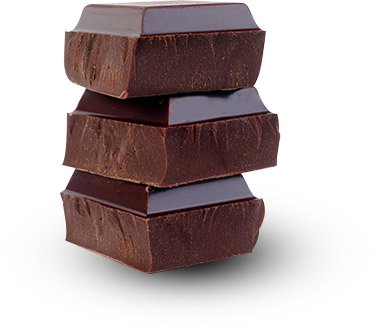
Current human studies suggest that cocoa helps to improve insulin sensitivity, particularly for those who already have decreased insulin sensitivity and high blood pressure (such as type 2 diabetics)8,9. By improving insulin sensitivity, your body becomes more efficient at moving sugar out of the blood and into cells to be used as energy.
A study on 15 healthy adults given either 100 grams per day of dark chocolate (500 mg total flavanols) or an equal amount of white chocolate, found that insulin sensitivity was doubled in the dark chocolate group. That was after only a 15-day period10.
So dark chocolate can have health benefits, but there is a catch. Your chocolate must be really dark chocolate, typically shown on the package as 85% cocoa or more. Fortunately for me, I've grown to really enjoy this variety and much prefer it to the taste of milk chocolate.
All the studies that found benefits used either dark chocolate or a cocoa extract equivalent to around 500-1000 mg of flavonols per day. This equals about 25-40 grams of 85% dark chocolate.
According to Calorieking, 20 grams of 70-85% dark chocolate has 120 calories (500 kilojoules) and 9.2 grams of carbohydrate, of which 4.8 grams are sugar. The lower the percentage of cocoa, the higher the calories and sugar.
Therefore, in order to reach the desired flavonol intake, it's pointless to eat any varieties less than 85% cocoa. Otherwise the health benefits are cancelled out by the increased amount of added sugar.
Summary: If you regularly eat chocolate, it's strongly recommended to swap to 85% dark chocolate, no less. There's a good chance it could improve your insulin sensitivity.
3
COFFEE
Benefit: Linked with a reduced risk of type 2 diabetes
Large observational studies have found those who drink more coffee appear to have a lower type 2 diabetes risk, ranging from 11% up to 40%11,12.

One review paper looked at 18 previous studies on the topic, with a total of 457,922 participants, and found that each additional daily cup of coffee lowered diabetes risk by 7%13. The exact reason for these links isn't known, but it could be because of coffee's polyphenols. These compounds have anti-oxidant properties and are widely believed to help prevent inflammatory illnesses such as obesity and type 2 diabetes14.
It could also be because coffee contains many minerals, such as magnesium (mentioned above), which are linked with improved insulin sensitivity.
Whatever the case, it's reasonable to assume that drinking coffee may also be beneficial to those already with type 2 diabetes or pre-diabetes.
Summary: For some reason not yet known, coffee appears to considerably reduce diabetes risk. It could be due to a combination of beneficial compounds including polyphenols and minerals.
4
GREEN COFFEE
Benefit: Appears to reduce absorption of sugar
Following on from coffee, green coffee is worth consideration too. They sound the same, but they are in fact very different. Green coffee refers to unroasted coffee beans. Unroasted coffee beans contain a large amount of chlorogenic acid, the active ingredient linked to most of the health benefits15.
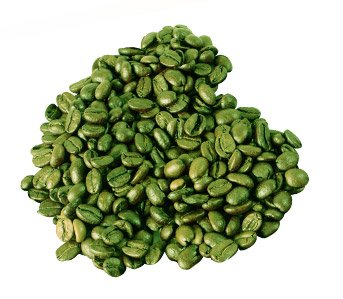
A supplement containing chlorogenic acid, known as green coffee bean extract, has shown promise in research looking at blood sugar control.
Several studies suggest it restricts glucose absorption into the bloodstream, which in turn lowers blood sugar levels and insulin spikes16,17. One study even found that chlorogenic acid-enriched coffee reduced glucose absorption by 6.9% compared to normal coffee18.
Green coffee, and indeed the chlorogenic acid within, could very well play a protective role in diabetes management.
Summary: The active ingredient in green coffee beans, chlorogenic acid, seems to significantly restrict absorption of sugar into the bloodstream. If you already drink coffee, try switching to green coffee and see how it works for you.
5
GREEN TEA CATECHINS
Benefit: Proven to improve glucose control
Coffee is great. Green coffee is even better. But green tea is the best.
It is loaded with many powerful compounds and antioxidants, making its nutritional value second to none.19 The main active ingredients in green tea are its polyphenols, which are thought to benefit almost every organ system in the body, including glucose metabolism.20
According to a review of seven studies with a total of 286,701 individuals, green tea drinkers had an 18 percent lower risk of type 2 diabetes.13 One Japanese study found that decreased risk blew out to 42 percent for the true green tea enthusiasts.21
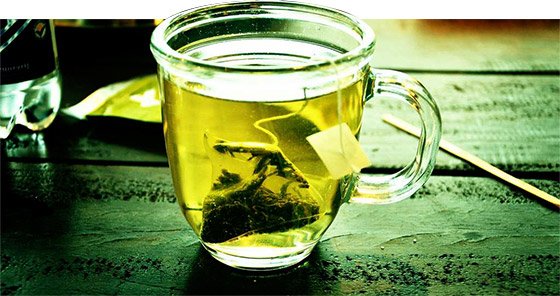
Normally I wouldn't draw conclusions from observational studiesbut this is a small change that could make a big difference to your metabolic health.
If you are already a tea drinker, it's time to switch to green. If you aren't, then it's time to start.
Summary: According to observational studies, regular green tea drinkers are 18-42 percent less likely to develop type 2 diabetes.
6
APPLE CIDER VINEGAR
Benefit: May improve glucose metabolism
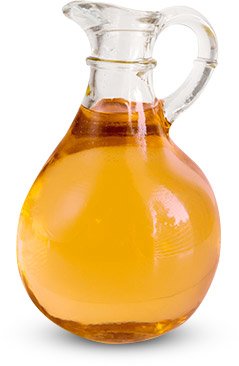
Vinegar is something of an ancient folk remedy, used for a variety of health problems in the past. The most popular among the natural health community is apple cider vinegar. Research has shown vinegar to play an influential role in reducing glucose uptake into the bloodstream, sometimes by as much as 34 percent.22
It seems to have an immediate impact, improving insulin sensitivity during a high-carb meal by 19-34 percent, and minimizing any spikes in blood glucose and insulin.23 In fact, there are loads of studies in both animals and humans that show vinegar significantly improves glucose metabolism in one way or another.24,25,26
Summary: There is a lot of evidence that vinegar consumption can greatly improve glucose metabolism. I'm a bit skeptical its impact would be as great as reported in some studies, but considering it's low in sugar and calories, it may be worth a try.
7
RESISTANT STARCH
Benefit: Can lower sugar levels and enhance insulin sensitivity
Most carbohydrates in the diet are starches. Starches are long chains of glucose found in grains, oats, potatoes, bananas, and various other foods. But not all of the starch we eat gets digested. Certain varieties pass through digestion unchanged; they do not get absorbed as sugar in the blood. Hence, the term "resistant starch."
Many studies in humans have shown resistant starches to be beneficial to digestion and health.27 This is why, gluten aside, whole-grains and seeds are often linked with health benefits.
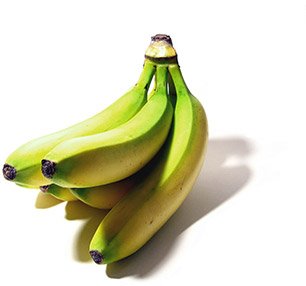
Looking at diabetes specifically, its benefits on glucose and insulin metabolism are very impressive. Several studies show resistant starch can improve insulin sensitivity—in other words, how well the body's cells respond to insulin.28
This may be why it's so effective at lowering blood sugar levels after meals.29,30 In fact, the effect is so great that having resistant starch with lunch will lower your blood sugar spikes at dinner too, known as the "second meal effect".31
Some studies have found a 33-50 percent improvement in insulin sensitivity after four weeks of consuming 15-30 grams per day. That is equal to what you would see if you lost around 10 percent body weight.32,33
Be mindful that many foods high in resistant starch are also high in digestible carbs and will affect your blood sugar. Fortunately, resistant starch is also available in supplement form without the extra carbs.
Summary: There is a lot of science supporting the antidiabetic effect of resistant starches. They seem like a fantastic option if you're struggling to control your sugars or have hit a plateau. Supplements are available and sure to increase in popularity.
8
YACON SYRUP
Benefit: May improve insulin resistance
Yacon syrup is extracted from the root of the South American yacon plant. It's worth mentioning because the popularity has really ballooned in the natural health community. Thank Dr Oz's weight-loss special for that one. Often called the "diet potato," yacon looks like a sweet potato and has been used for medicinal purposes for centuries.34
While the long-term weight loss effects of yacon syrup are questionable, it just might be helpful for diabetics.
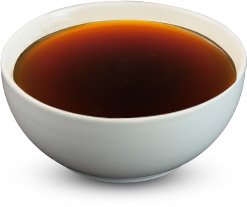
Following on from resistant starch above, about 50 percent of yacon syrup is made up of fructooligosaccharides (FOS), a form of resistant starch linked to health benefits. Because these starches don't get digested, they don't raise blood sugar. The FOS in yacon syrup also helps to "feed" the gut with healthy bacteria. A healthy gut environment is linked to a lower risk of type 2 diabetes, better immune system support, improved brain function, and more.35,36,37
There have also been several rodent studies showing yacon supplementation may be beneficial to glucose metabolism.38,39,40 And in a four-month trial of 35 obese women with high cholesterol, those receiving two doses of yacon syrup per day improved fasting insulin levels by 42 percent and reduced insulin resistance—a major risk factor for type 2 diabetes and heart disease—by 67 percent.41
The results are very impressive… perhaps too impressive. It's the only human study available, so I'm not getting carried away.
Summary: The evidence available on yacon syrup is impressive: however, there's not much of it. It could be worth a try if you're really struggling with blood sugar management.
9
FENUGREEK SEEDS
Benefit: Can reduce absorption of sugar into the blood
Fenugreek is a popular herb in Indian and Arabic regions. It was traditionally used for medicinal purposes, particularly to enhance masculinity and libido.
Fenugreek has several compounds that work together to improve glucose control, the most notable of which is thought to be a plant protein known as 4-hydroxyisoleucine.41
Based on a whole host of animal and human trials, it appears to be beneficial by either restricting absorption of sugar into the bloodstream, or by increasing insulin sensitivity.42,43,44,45
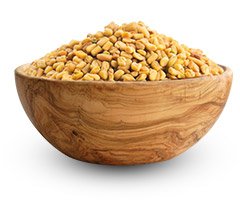
A study on 25 individuals newly diagnosed with type 2 diabetes found supplementing with one gram of fenugreek extract daily increased insulin sensitivity by 53 percent, compared with the control group.
Significant improvements to blood sugar control have also been seen in type 1 diabetics and healthy nondiabetics.46,47
Eating the seeds whole or as a flour has so far shown to be the most effective way to improve blood sugar control.
Summary: Fenugreek appears to greatly improve blood glucose control and overall diabetes management. Dosage-wise, 2-5 grams of fenugreek seeds can be very helpful for diabetics and should certainly be at the top of your list.
10
CINNAMON
Benefit: Can reduce sugar absorption and greatly improve insulin sensitivity
Cinnamon has been used in both sweet and savory dishes throughout history. Its use was documented as far back as Ancient Egypt and China, with its medicinal properties widely celebrated.48 These days, several human trials have found promising results for the antidiabetic effects of cinnamon intake.49,50
It appears that certain compounds in cinnamon interfere with digestive enzymes. This slows the digestion process, which also slows glucose absorption.51,52 As a result, less sugar enters the bloodstream after meals, minimizing sugar spikes.
Looking at effects on insulin, one laboratory study found cinnamon improves the effectiveness of insulin by more than twentyfold.53 It's no surprise then that clinical studies show a daily dose of cinnamon extract greatly improves insulin sensitivity in those with type 2 diabetes, insulin resistance, or polycystic ovary syndrome (54,55).
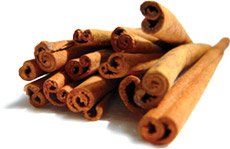
Interestingly, one compound in cinnamon called methylhydroxychalcone polymer (MHCP) mimics insulin by transphosphorylating the insulin receptor on fat cell membranes.56,57 This copycat mechanism to create more "insulin" appears to improve glucose absorption, albeit 3-6 times slower than insulin itself.
The typical dose required for cinnamon to have these antidiabetic effects is 1-6 grams daily, best taken with carbohydrate-containing meals.
Summary: Cinnamon appears to interfere with digestive enzymes, slowing the absorption of sugar into the bloodstream. It has also been shown to increase insulin effectiveness twentyfold, and even contains a compound that can mimic the function of insulin.
11
STEVIA
Benefit: May lower your blood sugar levels
With refined sugar now recognized as harmful, sweetener alternatives have become incredibly common, with stevia being one of the more popular choices. But what sets stevia apart is that it's a natural sweetener and does not appear to be harmful like many artificial sweeteners on the market.
The stevia plant itself originates from South America and has been used as a sweetener for centuries. The two active ingredients that make stevia sweet are called stevioside and rebaudioside A. These two compounds are hundreds of times sweeter than sugar.
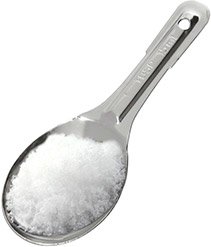
Now to the evidence.
Stevia shows a lot of promise for those with type 2 diabetes directly after meals, particularly with insulin, the hormone that moves blood sugar into cells.58,59 In a human study looking at meal responses, type 2 diabetics took either one gram of stevioside with a meal, or one gram of maize starch. After the meal, the group taking stevioside had a reduction in blood sugar by about 18 percent.60
Another study compared sucrose (regular sugar), aspartame (sweetener) and stevia. Stevia was found to lower both blood sugar and insulin levels after a meal, compared to sucrose and aspartame.61
Summary: If your blood sugars are too high, stevia should be your first choice as a sugar alternative. In many countries you can actually buy the stevia plant and grow it yourself.
12
HONEY
Benefit: Can be a good alternative for sugar
Lastly, if you're not one for sweeteners, raw honey is an option. Honey is a bit hit and miss, but I think it warrants consideration for those with diabetes.
A study on patients who were either healthy, diabetic, or had high cholesterol found that honey raised blood sugar less than dextrose (glucose) and sucrose (glucose and fructose). So it did raise sugar, but not as high.62 While not overly impressive, that same study also found honey reduced CRP (a marker of inflammation), lowered LDL cholesterol and triglycerides, raised HDL cholesterol, and lowered homocysteine (another marker of disease).
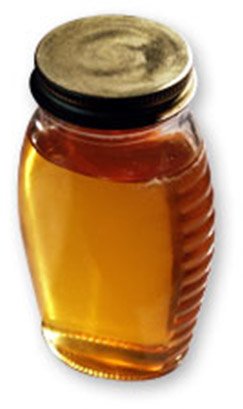
Considering that those with diabetes tend to have issues with all of those health markers, honey doesn't seem so bad compared to added sugar.
In another clinical trial of 48 people with diabetes, participants were split into either the honey-feeding group or the control group who received no additional sugar. Those fed honey for eight weeks had reduced total cholesterol, lower body weight, and increased HDL cholesterol compared with the control group.
Honey may be a good alternative to sugar, rather than added to the diet for benefits. In other words, honey replacing sugar may help, but not as an extra in your diet.
Summary: Honey is healthier than added sugar, but worse than not adding any sugar at all. It's worth consideration for those looking to replace added sugars with something other than sweeteners.
WHAT ARE YOU WAITING FOR?
Type 2 diabetes has increased tenfold in just a few decades, and shows no signs of slowing. Dietary choices can play a huge role in preventing or managing this disease, and some of these foods may be worth adding to your grocery list. It only makes sense that a diet-specific health condition is best treated through diet.
References
- Ryan MF. (1991). The role of magnesium in clinical biochemistry: an overview. Ann Clin Biochem, 28(Pt 1):19-26.
- National Academy Press (1997). Dietary Reference Intakes for Calcium, Phosphorus, Magnesium, Vitamin D, and Fluoride. Food and Nutrition Board, Institute of Medicine.
- United States Department of Agriculture. Agricultural Research Service.
- De Lordes Lima M, Cruz T, Pousada JC, Rodrigues LE, Barbosa K, Canguçu V. (1998). The effect of magnesium supplementation in increasing doses on the control of type 2 diabetes. Diabetes Care, 21(5):682-6.
- Guerrero-Romero F, Rodríguez-Morán M. (2011). Magnesium improves the beta-cell function to compensate variation of insulin sensitivity: double-blind, randomized clinical trial. Eur J Clin Invest, 41(4):405-10.
- Mooren FC, Krüger K, Völker K, Golf SW, Wadepuhl M, Kraus A. (2011). Oral magnesium supplementation reduces insulin resistance in non-diabetic subjects - a double-blind, placebo-controlled, randomized trial. Diabetes Obes Metab, 13(3):281-4.
- Lee S, Park HK, Son SP, Lee CW, Kim IJ, Kim HJ. (2009). Effects of oral magnesium supplementation on insulin sensitivity and blood pressure in normo-magnesemic nondiabetic overweight Korean adults. Nutr Metab Cardiovasc Dis, 19(11):781-8.
- Grassi D, Necozione S, Lippi C, Croce G, Valeri L, Pasqualetti P, Desideri G, Blumberg JB, Ferri C. (2005). Cocoa reduces blood pressure and insulin resistance and improves endothelium-dependent vasodilation in hypertensives. Hypertension, 46(2):398-405.
- Grassi D, Desideri G, Necozione S, Lippi C, Casale R, Properzi G, Blumberg JB, Ferri C. (2008). Blood pressure is reduced and insulin sensitivity increased in glucose-intolerant, hypertensive subjects after 15 days of consuming high-polyphenol dark chocolate. J Nutr, Sep;138(9):1671-6.
- Grassi D, Lippi C, Necozione S, Desideri G, Ferri C. (2005). Short-term administration of dark chocolate is followed by a significant increase in insulin sensitivity and a decrease in blood pressure in healthy persons. Am J Clin Nutr, 81(3):611-4.
- Bhupathiraju SN, Pan A, Manson JE, Willett WC, van Dam RM, Hu FB. (2014). Changes in coffee intake and subsequent risk of type 2 diabetes: three large cohorts of US men and women. Diabetologia, 57(7):1346-54.
- Van Dieren S, Uiterwaal CS, van der Schouw YT, van der A DL, Boer JM, Spijkerman A, Grobbee DE, Beulens JW. (2009). Coffee and tea consumption and risk of type 2 diabetes. Diabetologia, 52(12):2561-9.
- Huxley R, Lee CM, Barzi F, Timmermeister L, Czernichow S, Perkovic V, Grobbee DE, Batty D, Woodward M. (2009). Coffee, decaffeinated coffee, and tea consumption in relation to incident type 2 diabetes mellitus: a systematic review with meta-analysis. Arch Intern Med, 169(22):2053-63.
- Arts IC, Hollman PC. (2005). Polyphenols and disease risk in epidemiologic studies. Am J Clin Nutr, 81(1 Suppl):317S-325S.
- Zhao Y, Wang J, Ballevre O, Luo H, Zhang W. (2012). Antihypertensive effects and mechanisms of chlorogenic acids. Hypertens Res, 35(4):370-4.
- Johnston KL, Clifford MN, Morgan LM. (2003). Coffee acutely modifies gastrointestinal hormone secretion and glucose tolerance in humans: glycemic effects of chlorogenic acid and caffeine. Am J Clin Nutr, 78(4):728-33.
- Van Dijk AE, Olthof MR, Meeuse JC, Seebus E, Heine RJ, van Dam RM. (2009). Acute effects of decaffeinated coffee and the major coffee components chlorogenic acid and trigonelline on glucose tolerance. Diabetes Care, 32(6):1023-5.
- Thom E. (2007). The effect of chlorogenic acid enriched coffee on glucose absorption in healthy volunteers and its effect on body mass when used long-term in overweight and obese people. J Int Med Res, 35(6):900-8.
- Serafini M, Ghiselli A, Ferro-Luzzi A. (1996). In vivo antioxidant effect of green and black tea in man. Eur J Clin Nutr, 50(1):28-32.
- Liu K, Zhou R, Wang B, Chen K, Shi LY, Zhu JD, Mi MT. (2013). Effect of green tea on glucose control and insulin sensitivity: a meta-analysis of 17 randomized controlled trials. Am J Clin Nutr, 98(2):340-8.
- Iso H, Date C, Wakai K, Fukui M, Tamakoshi A; JACC Study Group. (2006). The relationship between green tea and total caffeine intake and risk for self-reported type 2 diabetes among Japanese adults. Ann Intern Med, 144(8):554-62.
- Brighenti F, Castellani G, Benini L, Casiraghi MC, Leopardi E, Crovetti R, Testolin G. (1995). Effect of neutralized and native vinegar on blood glucose and acetate responses to a mixed meal in healthy subjects. Eur J Clin Nutr, 49(4):242-7.
- Johnston CS, Kim CM, Buller AJ. (2004). Vinegar improves insulin sensitivity to a high-carbohydrate meal in subjects with insulin resistance or type 2 diabetes. Diabetes Care, 27(1):281-2.
- Johnston CS, Steplewska I, Long CA, Harris LN, Ryals RH. (2010). Examination of the antiglycemic properties of vinegar in healthy adults. Ann Nutr Metab, 56(1):74-9.
- Leeman M, Ostman E, Björck I. (2005). Vinegar dressing and cold storage of potatoes lowers postprandial glycaemic and insulinaemic responses in healthy subjects. Eur J Clin Nutr, 59(11):1266-71.
- Budak NH, Aykin E, Seydim AC, Greene AK, Guzel-Seydim ZB. (2014). Functional properties of vinegar. J Food Sci, 79(5):R757-64.
- Nugent AP. (2005). Health properties of resistant starch. Nutrition Bulletin. Volume 30, Issue 1, pages 27-54, March.
- Johnston KL, Thomas EL, Bell JD, Frost GS, Robertson MD. (2010). Resistant starch improves insulin sensitivity in metabolic syndrome. Diabet Med, 27(4):391-7.
- Behall, K. M., & Hallfrisch, J. (2002). Plasma glucose and insulin reduction after consumption of breads varying in amylose content. European Journal of Clinical Nutrition, 56(9), 913-920.
- Alexander D. (2012). Postprandial effects of resistant starch corn porridges on blood glucose and satiety responses in non-overweight and overweight adults. Graduate Theses and Dissertations. Paper 12722.
- Brighenti F, Benini L, Del Rio D, Casiraghi C, Pellegrini N, Scazzina F, Jenkins DJ, Vantini I. (2006). Colonic fermentation of indigestible carbohydrates contributes to the second-meal effect. Am J Clin Nutr, 83(4):817-22.
- Robertson MD, Bickerton AS, Dennis AL, Vidal H, Frayn KN. (2005). Insulin-sensitizing effects of dietary resistant starch and effects on skeletal muscle and adipose tissue metabolism. Am J Clin Nutr, 82(3):559-67.
- Maki KC, Pelkman CL, Finocchiaro ET, Kelley KM, Lawless AL, Schild AL, Rains TM. (2012). Resistant starch from high-amylose maize increases insulin sensitivity in overweight and obese men. J Nutr, 142(4):717-23.
- Aybar MJ, Sánchez Riera AN, Grau A, Sánchez SS. (2001). Hypoglycemic effect of the water extract of Smallantus sonchifolius (yacon) leaves in normal and diabetic rats. J Ethnopharmacol, 74(2):125-32.
- Musso G, Gambino R, Cassader M. (2010). Obesity, diabetes, and gut microbiota: the hygiene hypothesis expanded? Diabetes Care, 33(10):2277-84.
- Cryan JF, O'Mahony SM. (2011). The microbiome-gut-brain axis: from bowel to behavior. Neurogastroenterol Motil. 23(3):187-92.
- Ley RE, Turnbaugh PJ, Klein S, Gordon JI. (2006). Microbial ecology: human gut microbes associated with obesity. Nature, 444(7122):1022-3.
- Genta SB, Cabrera WM, Grau A, Sánchez SS. (2005). Subchronic 4-month oral toxicity study of dried Smallanthus sonchifolius (yacon) roots as a diet supplement in rats. Food Chem Toxicol. 43(11):1657-65.
- Satoh, H., Nguyen, M. A., Kudoh, A., & Watanabe, T. (2013). Yacon diet (Smallanthus sonchifolius, Asteraceae) improves hepatic insulin resistance via reducing Trb3 expression in Zucker fa/fa rats. Nutrition & Diabetes, 3(5), e70.
- Oliveira GO, Braga CP, Fernandes AA. (2013). Improvement of biochemical parameters in type 1 diabetic rats after the roots aqueous extract of yacon [Smallanthus sonchifolius (Poepp.& Endl.)] treatment. Food Chem Toxicol. 59:256-60.
- Genta S, Cabrera W, Habib N, Pons J, Carillo IM, Grau A, Sánchez S. (2009). Yacon syrup: beneficial effects on obesity and insulin resistance in humans. Clin Nutr. 28(2):182-7.
- Gupta A, Gupta R, Lal B. (2001). Effect of Trigonella foenum-graecum (fenugreek) seeds on glycaemic control and insulin resistance in type 2 diabetes mellitus: a double blind placebo controlled study. J Assoc Physicians India. 49:1057-61.
- Swanston-Flatt SK, Day C, Flatt PR, Gould BJ, Bailey CJ. (1989) Glycaemic effects of traditional European plant treatments for diabetes. Studies in normal and streptozotocin diabetic mice. Diabetes Res. 10(2):69-73.
- Sharma RD, Raghuram TC. (1990). Hypoglycaemic effect of fenugreek seeds in non-insulin dependent diabetic subjects. Nutrition Research. 10:731-739.
- Sharma RD, Sarkar A, Hazara DK, Mishra B, Singh JB, Sharma SK, Maheshwari BB, Maheshwari PK. (1996) Use of Fenugreek seed powder in the management of non-insulin dependent diabetes mellitus. Nutrition Research. 16(8):1331-1339.
- Abdel-Barry JA, Abdel-Hassan IA, Jawad AM, al-Hakiem MH. (2000). Hypoglycaemic effect of aqueous extract of the leaves of Trigonella foenum-graecum in healthy volunteers. East Mediterr Health J. 6(1)1:83-8.
- Sharma RD, Raghuram TC, Rao NS. (1990). Effect of fenugreek seeds on blood glucose and serum lipids in type I diabetes. Eur J Clin Nutr. 44(4):301-6.
- Toussaint-Samat M. A History of Food. John Wiley & Sons, 2009
- Kirkham S, Akilen R, Sharma S, Tsiami A. (2009). The potential of cinnamon to reduce blood glucose levels in patients with type 2 diabetes and insulin resistance. Diabetes Obes Metab. 11(12):1100-13
- Pham AQ, Kourlas H, Pham DQ. (2007). Cinnamon supplementation in patients with type 2 diabetes mellitus. Pharmacotherapy. 27(4):595-9.
- Adisakwattana S, Lerdsuwankij O, Poputtachai U, Minipun A, Suparpprom C. (2011). Inhibitory activity of cinnamon bark species and their combination effect with acarbose against intestinal a-glucosidase and pancreatic a-amylase. Plant Foods Hum Nutr. Jun;66(2):143-8.
- Mohamed Sham Shihabudeen H, Hansi Priscilla D, Thirumurugan K. (2011). Cinnamon extract inhibits a-glucosidase activity and dampens postprandial glucose excursion in diabetic rats. Nutr Metab (Lond). 8(1):46.
- Broadhurst CL, Polansky MM, Anderson RA. (2000). Insulin-like biological activity of culinary and medicinal plant aqueous extracts in vitro. J Agric Food Chem. 48(3):849-52.
- Qin B, Panickar KS, Anderson RA.. (2010). Cinnamon: potential role in the prevention of insulin resistance, metabolic syndrome, and type 2 diabetes. J Diabetes Sci Technol. 4(3):685-93.
- Anderson RA. (2008). Chromium and polyphenols from cinnamon improve insulin sensitivity. Proc Nutr Soc. 67(1):48-53.
- Jarvill-Taylor KJ, Anderson RA, Graves DJ. (2001). A hydroxychalcone derived from cinnamon functions as a mimetic for insulin in 3T3-L1 adipocytes. J Am Coll Nutr. 20(4):327-36.
- Imparl-Radosevich J, Deas S, Polansky MM, Baedke DA, Ingebritsen TS, Anderson RA, Graves DJ. (1998). Regulation of PTP-1 and insulin receptor kinase by fractions from cinnamon: implications for cinnamon regulation of insulin signalling. Horm Res. 50(3):177-82.
- Jeppesen PB, Gregersen S, Poulsen CR, Hermansen K. (2000). Stevioside acts directly on pancreatic beta cells to secrete insulin: actions independent of cyclic adenosine monophosphate and adenosine triphosphate-sensitive K+-channel activity. Metabolism. 49(2):208-14.
- Chang JC, Wu MC, Liu IM, Cheng JT. (2005). Increase of insulin sensitivity by stevioside in fructose-rich chow-fed rats. Horm Metab Res. 37(10):610-6.
- Gregersen S, Jeppesen PB, Holst JJ, Hermansen K. (2004). Antihyperglycemic effects of stevioside in type 2 diabetic subjects. Metabolism. 53(1): 73-76.
- Anton SD, Martin CK, Han H, Coulon S, Cefalu WT, Geiselman P, Williamson DA. (2010). Effects of stevia, aspartame, and sucrose on food intake, satiety, and postprandial glucose and insulin levels. Appetite. 55(1):37-43.
- Al-Waili NS. (2004). Natural honey lowers plasma glucose, C-reactive protein, homocysteine, and blood lipids in healthy, diabetic, and hyperlipidemic subjects: comparison with dextrose and sucrose. J Med Food. 7(1):100-7.
- Bahrami M, Ataie-Jafari A, Hosseini S, Foruzanfar MH, Rahmani M, Pajouhi M. (2009). Effects of natural honey consumption in diabetic patients: an 8-week randomized clinical trial. Int J Food Sci Nutr. 60(7):618-26.
Recommended For You
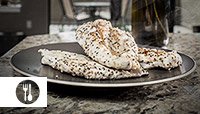
The Hidden Truth Behind America's Deadliest Habit And The Simple Way
To Beat It
Every 5 seconds, another American develops type-2 diabetes. The author of SUGAR NATION--and our editor-in-chief--offers advice to keep you from becoming one.

Body Transformation: Eric Hicks Torched 131 Pounds To Reveal Ripped Muscle!
Eric refused to follow his dad's diabetic fate and committed to change his lifestyle. See how he lost 131 pounds with a healthy mix of training and nutrition!